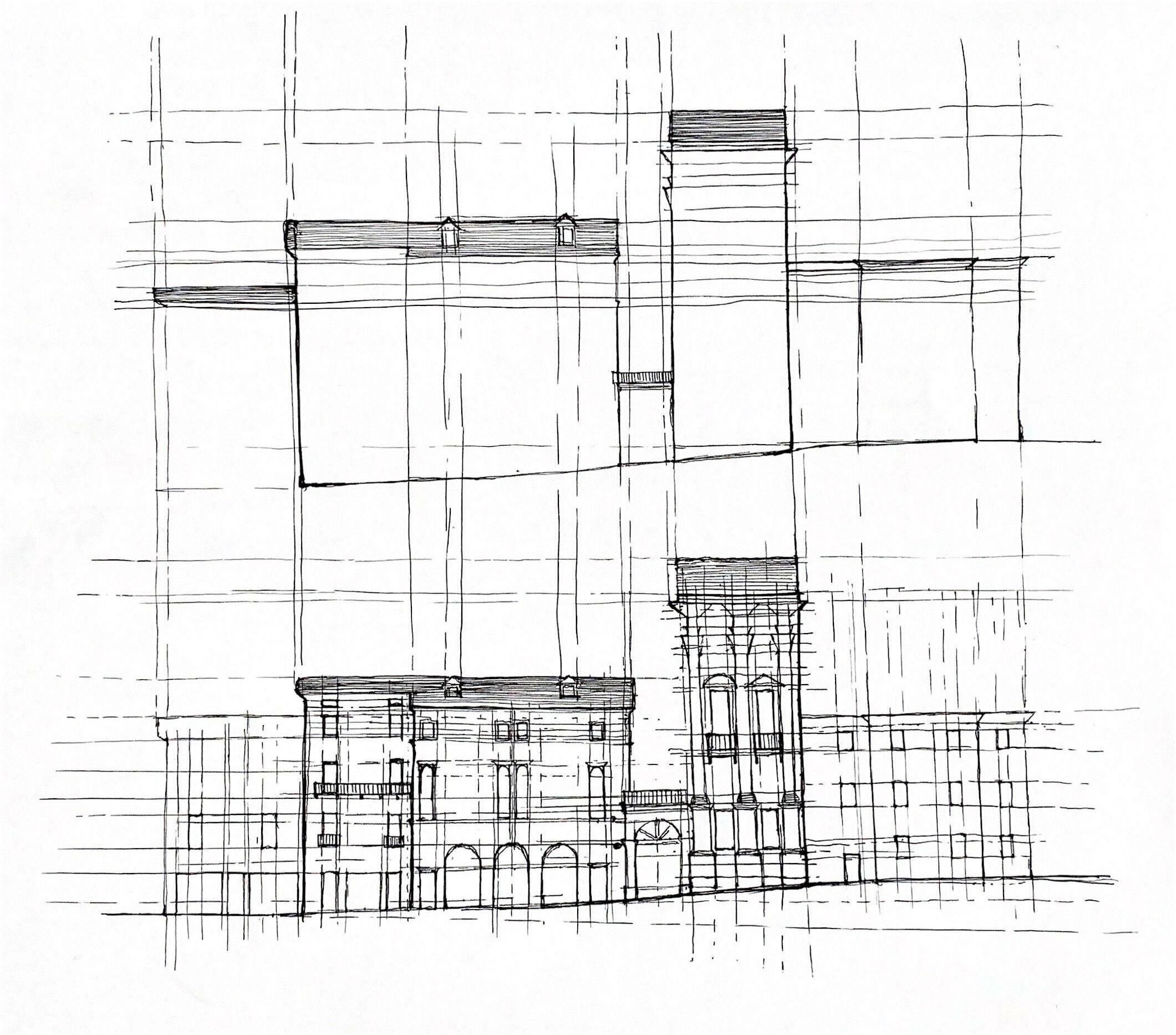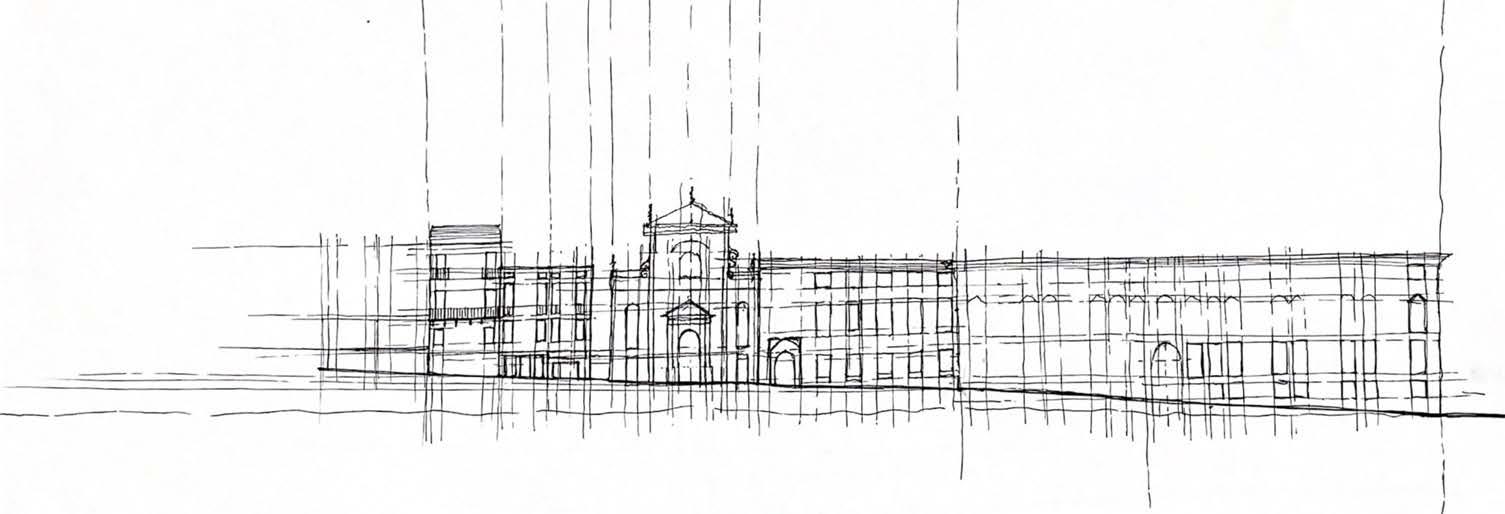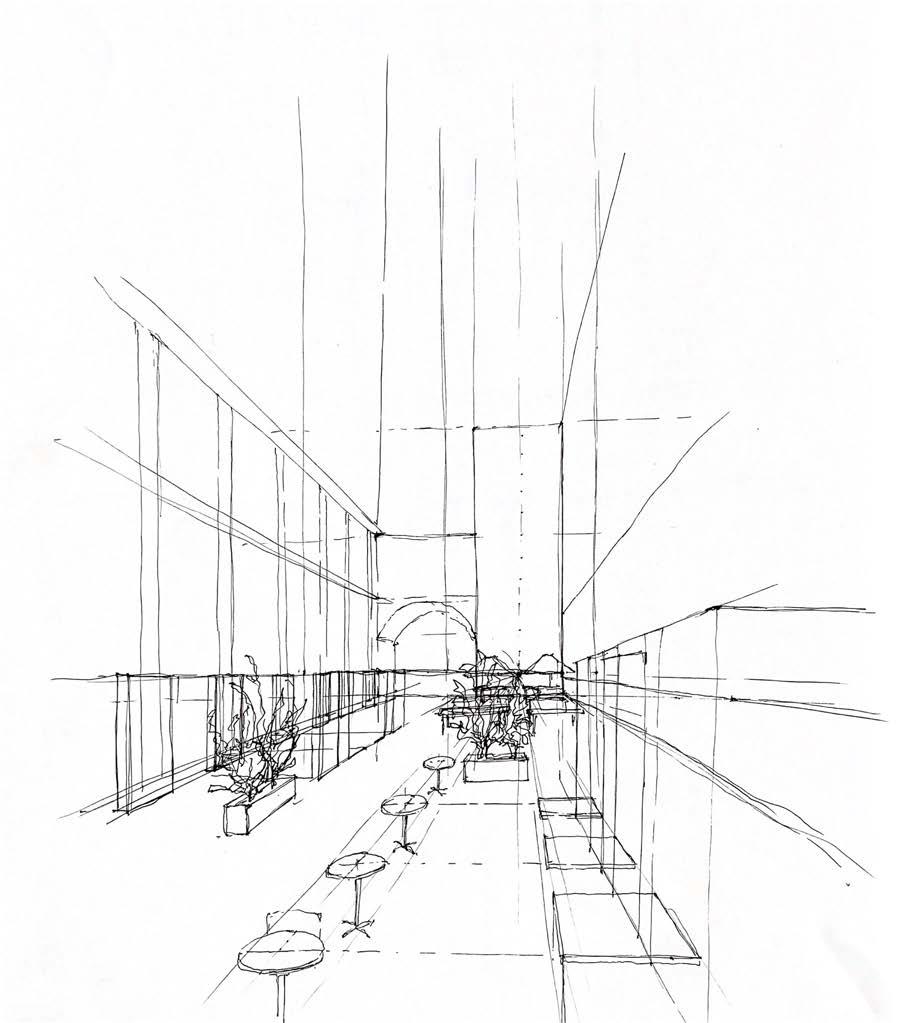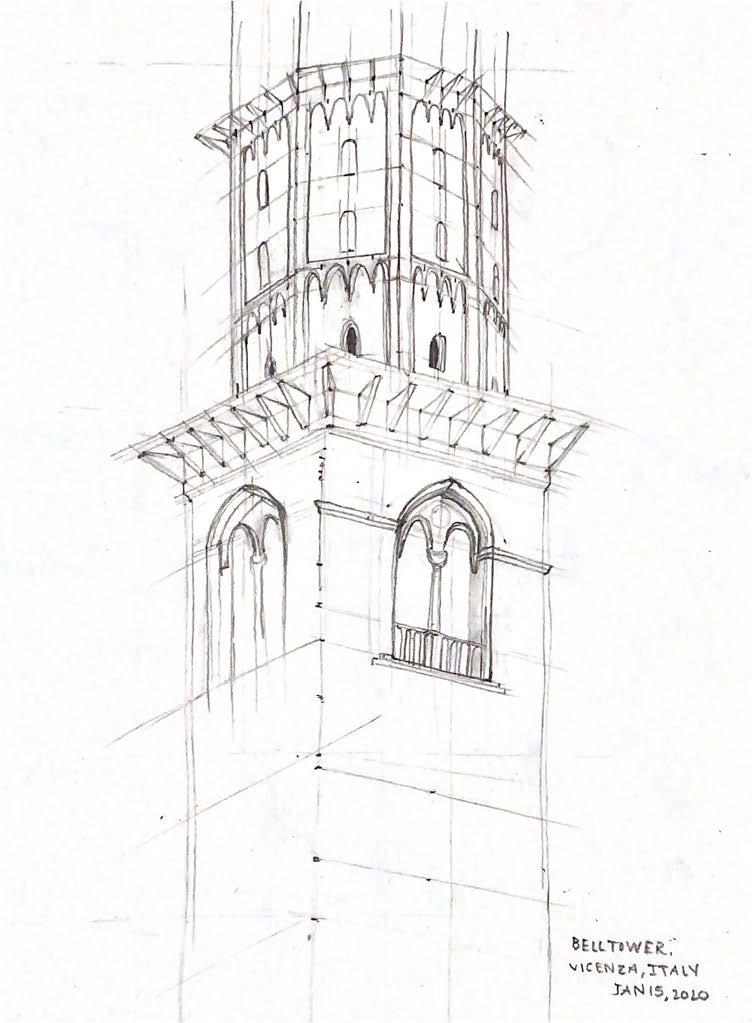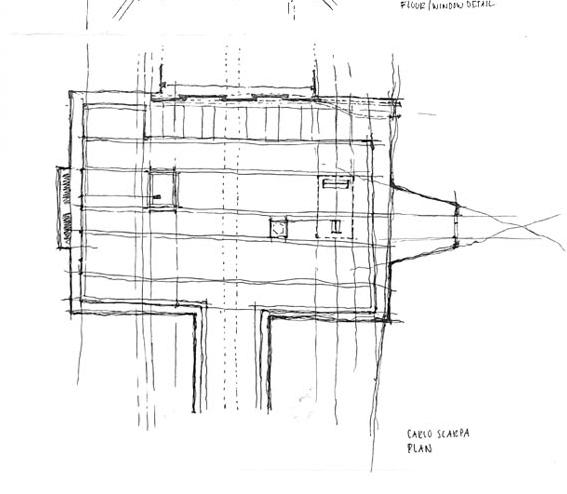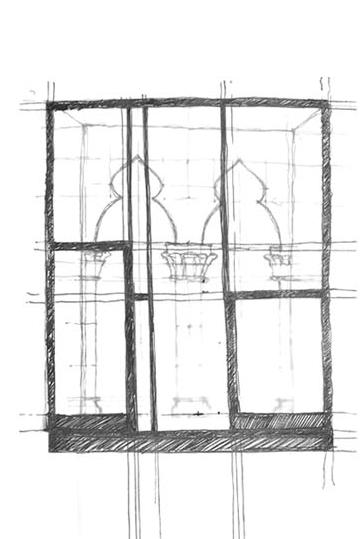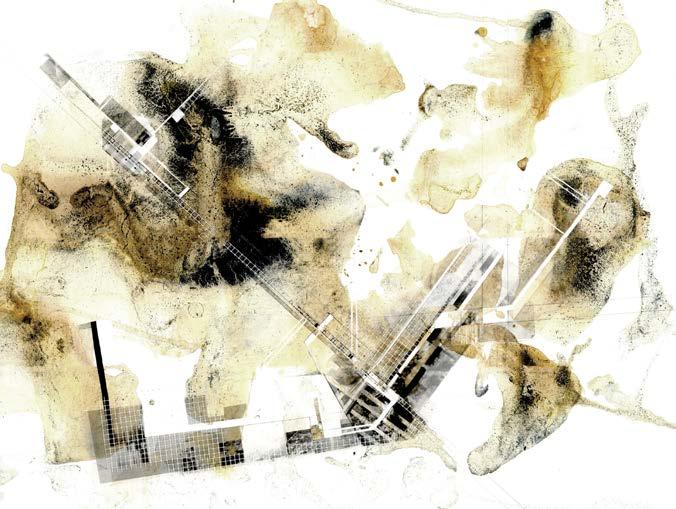
5 minute read
KARST
How do humans find place in an environment that lacks orientation, identity, and permanence?
The aquatic biome of a karst is a reinterpretation of desert. Its porous surface offers a vast expanse of inhospitable landscape - one that lives in complete isolation. The dissolution of limestone over time molds a surface and subsurface that is in constant flux. Pulling from the markings of an articulated surface, architecture emerges to offer a solution that reacts to the landscape and manipulates the ground.
Advertisement
Genesis Ground Of
The nature of ice mimics the impermanence of a dissolving landscape. Freezing water in layers casts an effervescent quality akin to subterranean rivers that construct an aquatic biome. Saturating the fractures in the ice as it melts results in fields of varying densities from which architecture can pull from and intervene.
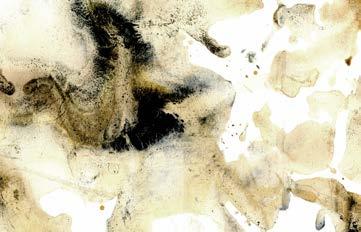

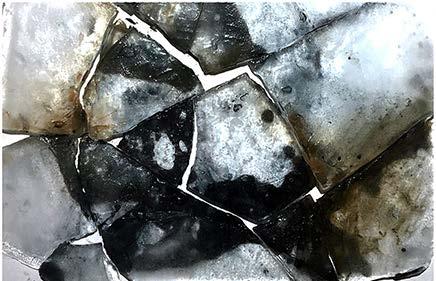


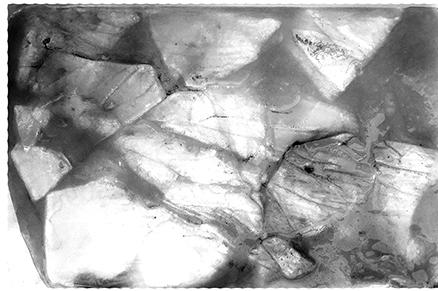

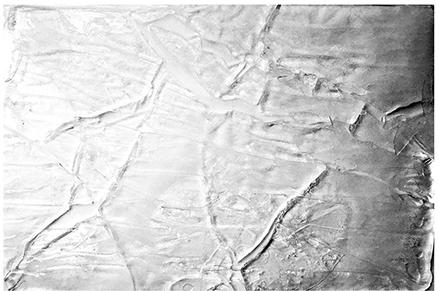
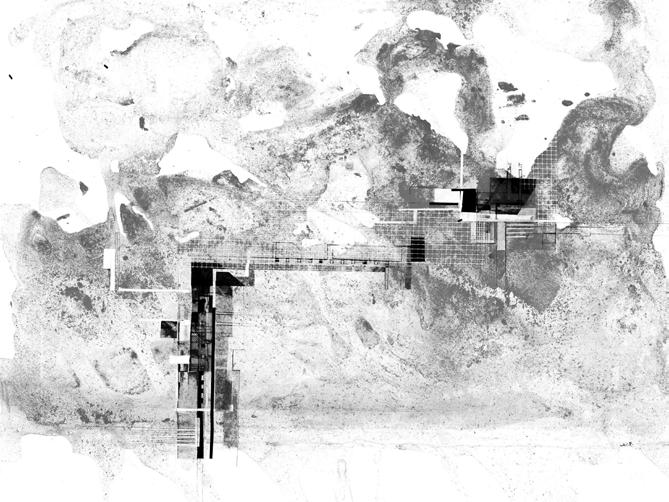
Collaboration
Experimentation
A connection of earth, sky, and water tether together an occupiable plenum. Satellite nodes carve into the aquatic biome puncturing layers of horizon. A new underground world is revealed - facilitating mysteries to be uncovered and new information to be found by the divers who navigate the network of flooded caves.
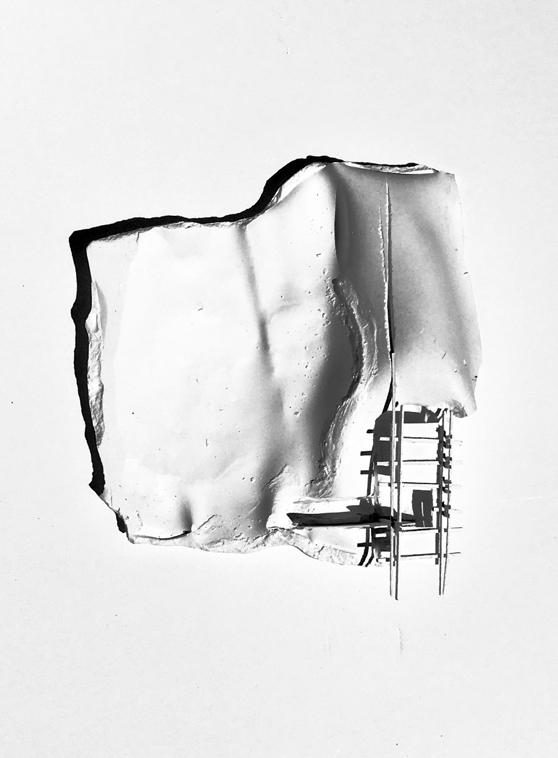
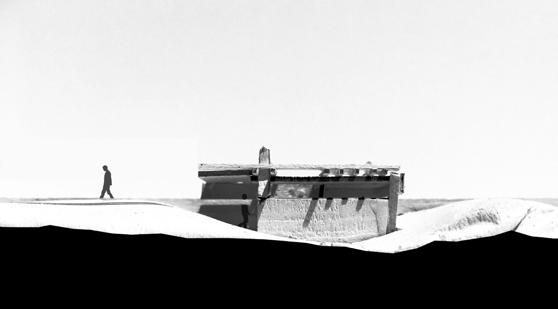
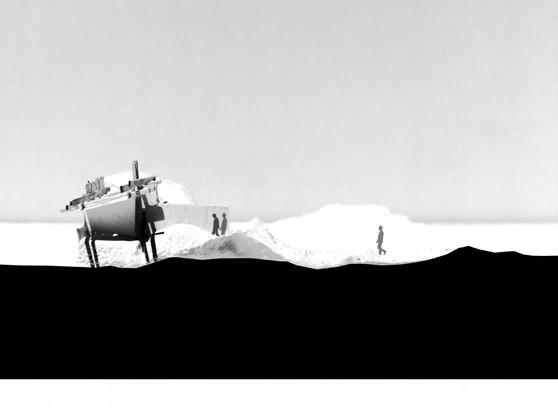
The rich biodiversity of an aquatic biome that is concealed beneath an immense homogeneous landscape encourages exploration and discovery of new marine organisms. A remote research center provides a hospitable environment for the collection, experimentation, and discussion of the aquatic life discovered in the network of rivers beneath the surface. Scientists dwell in the hierarchy of spaces as a community in isolation. Sleeping spaces and laboratories are joined by a central meeting place intended for open collaboration
Exterior Perspective
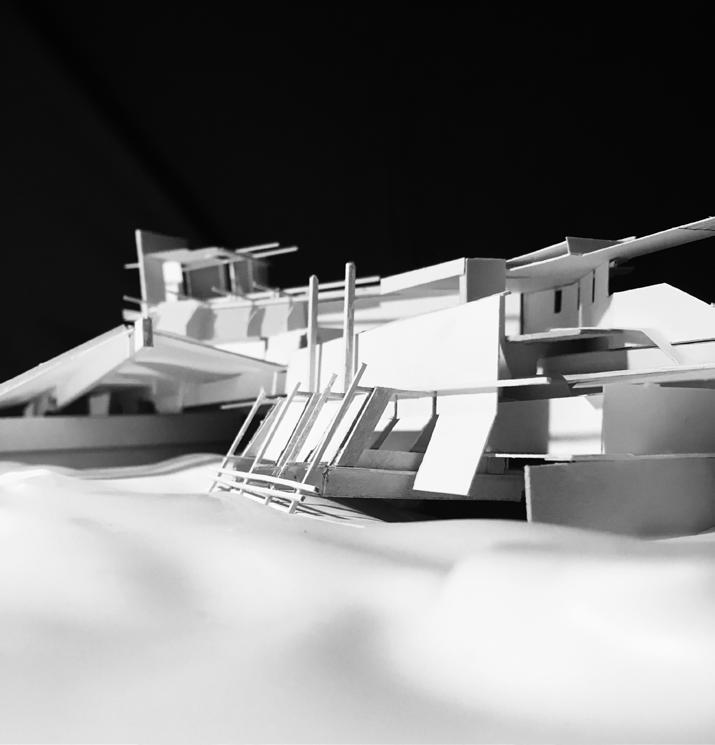

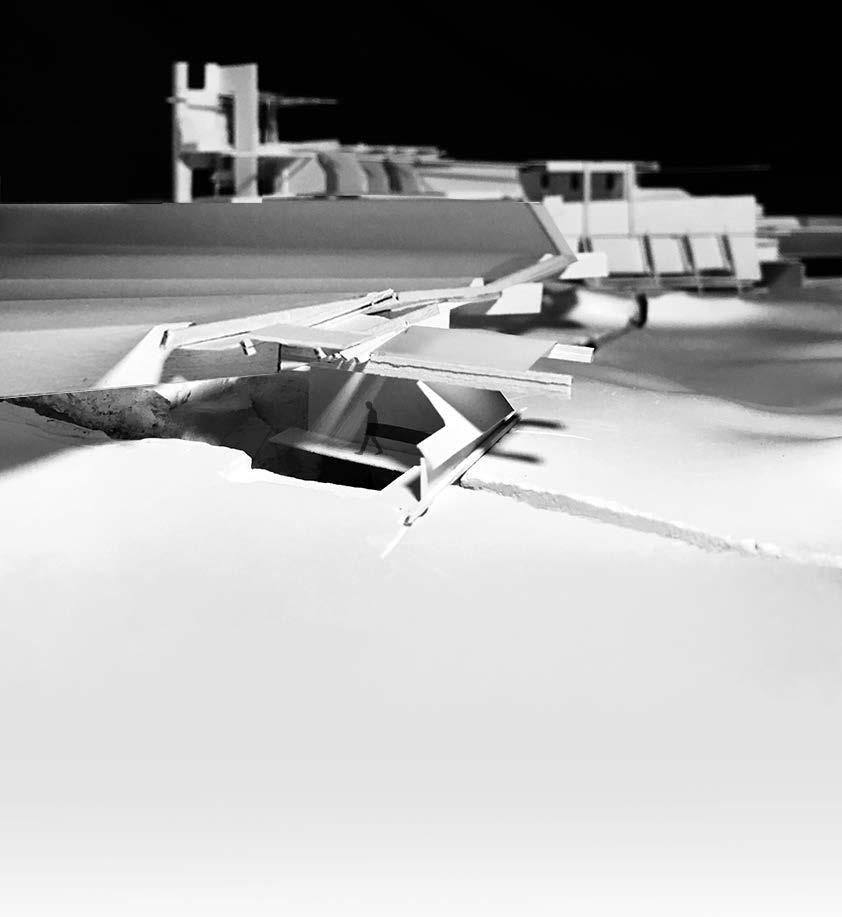
Entry To Rivers
Entrance
design studio 5 prof. martin gold fall 2019 b.a. of design univ. of florida prarie creek natural burial reserve gainesville, fl
Chapel Of Memory
Natural burial celebrates the journey of the body from birth, through life, into death and finally returning to the earth — among the elements from which it depended. The still marsh waters, moss-cloaked trees, sandy soils, and burned reminance of the burial grounds become the edges, thresholds and fields that reveal a new landscape — one that holds the memories of people who inhabit with a certain temporality and permanence. As holy remains dwell within the layers of the earth, the Chapel of Memory is extruded from the implicit boundaries below, forming layers of registration from which a “consolationscape” emerges.
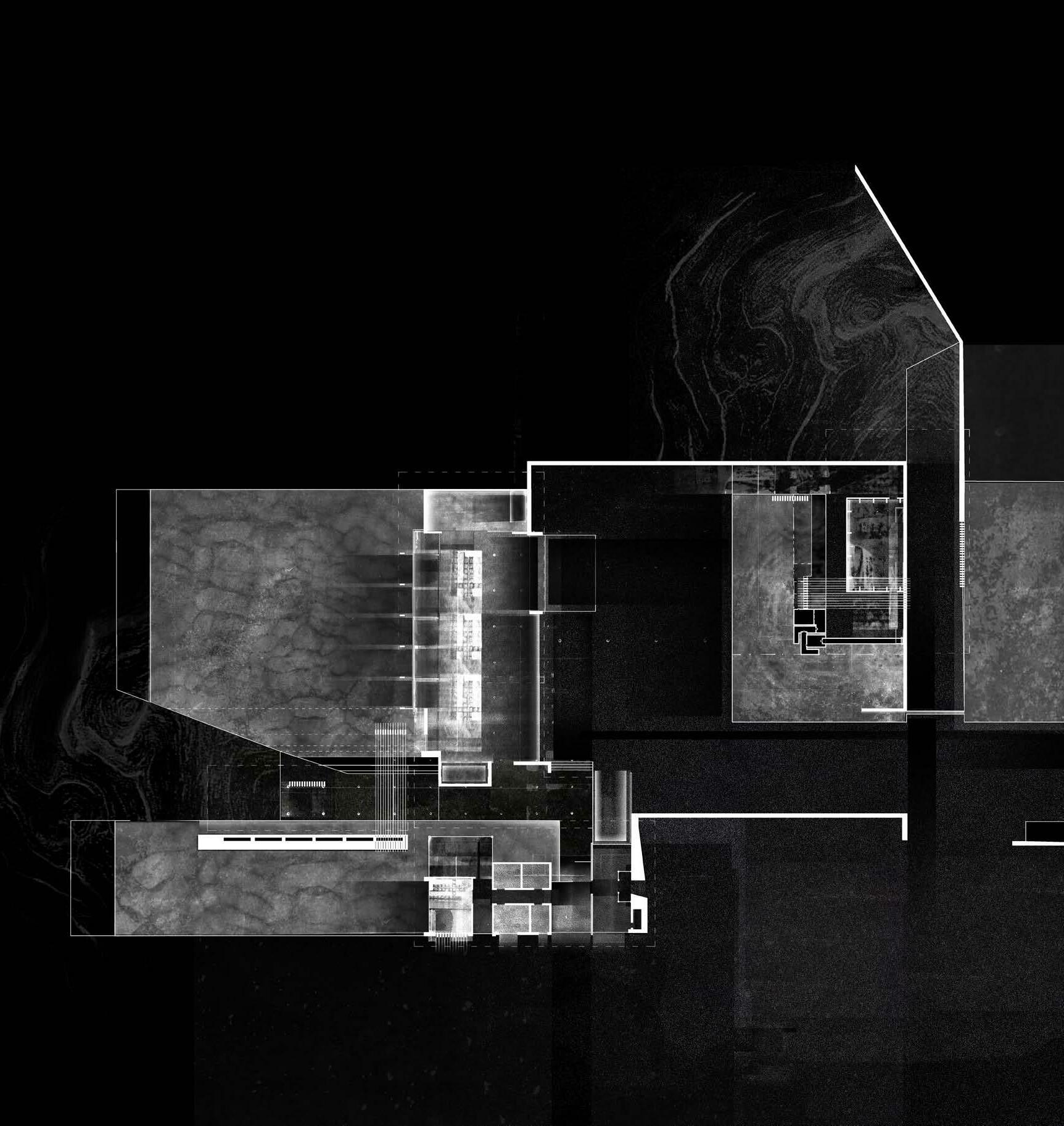
Differentiation
Continuity
Interpenetration
There is a distinct separation of program in the ritual of funeral - gathering, meditation, and mourning. The ground is touched with a heavy hand - pulling up concrete walls to frame each of the spaces as if they are “of the earth.” These hard edges create subtle thresholds to elicit pockets of pause and thus call attention to their individualty.
The presence of pools connects these spaces through a gradation of textures of water. Upon arrival, flowing water greets the visitors - quieting conversation into the gathering space. The murmring of water trickling down stones reveals an outdoor private meditation space. The view of the chapel is then able to be revealed in the reflections of silent pools that surround it.
Differentiation and continuity work dynamically to create three moments that are parts within the wholeindividualized practices within the ritual of funeral. The ability to read these spaces seperately and then together enforces an inside-outside relationship that threads movement throughout the project. Hard and soft edges offer directionality but encourage individual discovery of the site. MOURNING
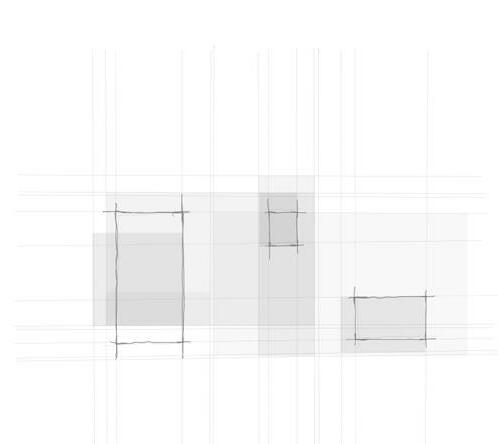

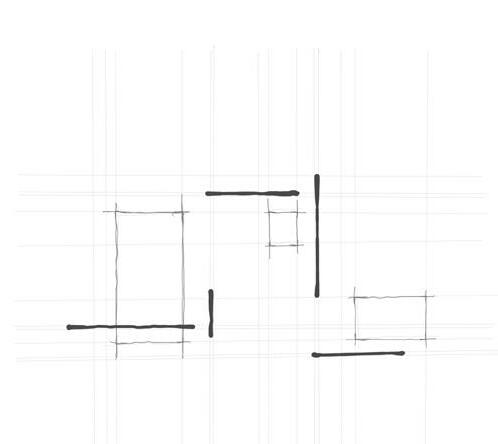

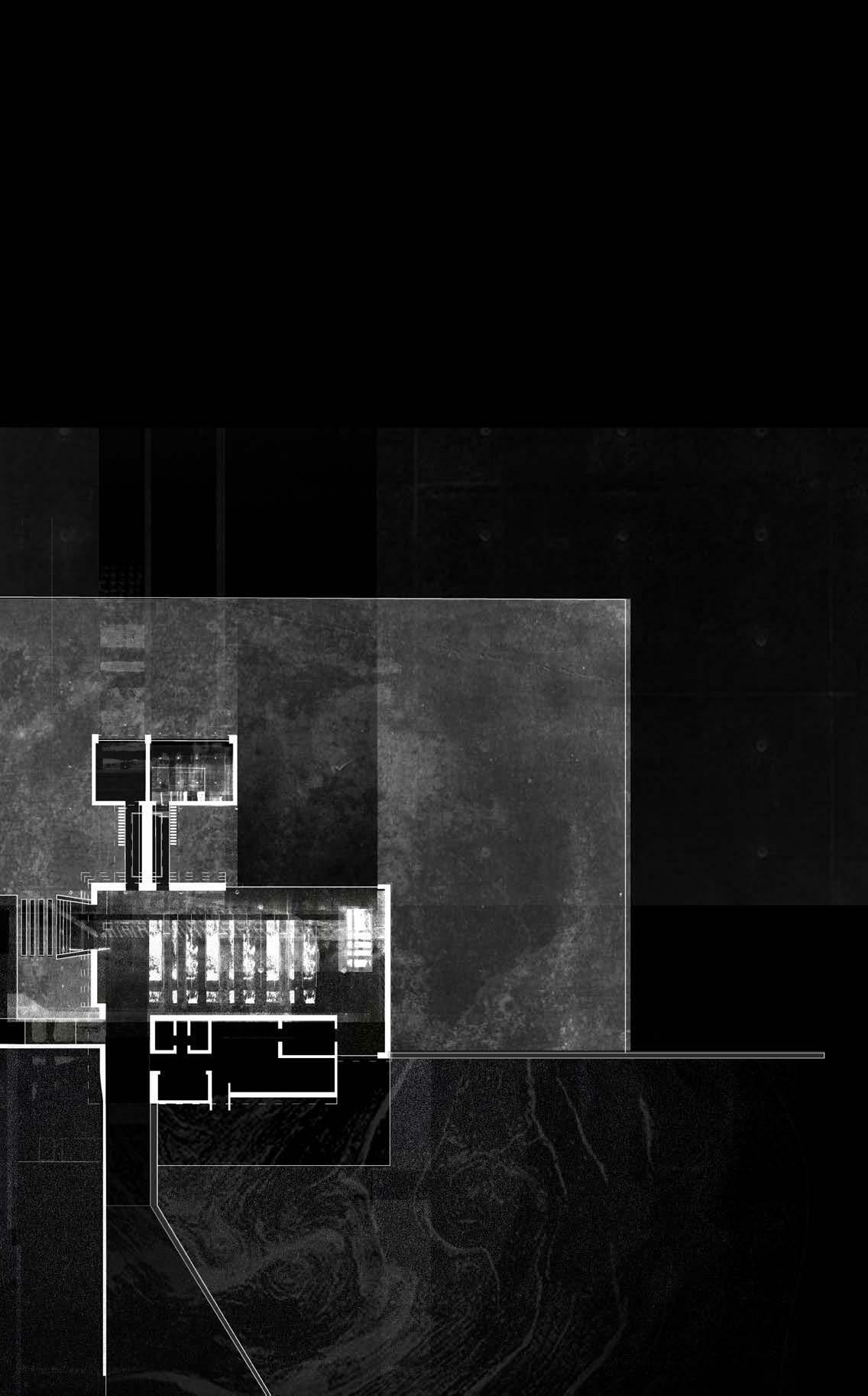
Temporality


The transient nature of architecture arises from the presence of the individual. The ritual of funeral in itself is ephemeral. Visitors come and go in a cycle of temporary occupation to gather, meditate, and mourn. Materials in the form of water and light are the bodies that occupy these spaces when the living do not. An unconsciousness understood by still waters can be awakened by the slightest movement of air across its surface just as the people that visit the site are experiencing it with a certain plasticity

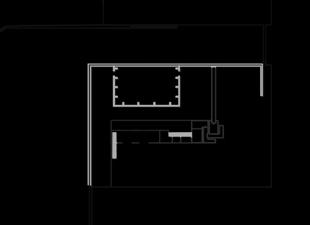
Permanence
Walls composed of site-cast concrete are molded with aggregate from a local quarry bringing to life the natural textures of the ground in a state of permanence. The materiality is “of the earth.” As bodies become one with the earth again, the materiality of the chapel will mature with time and grow new life in the form of vegetation.
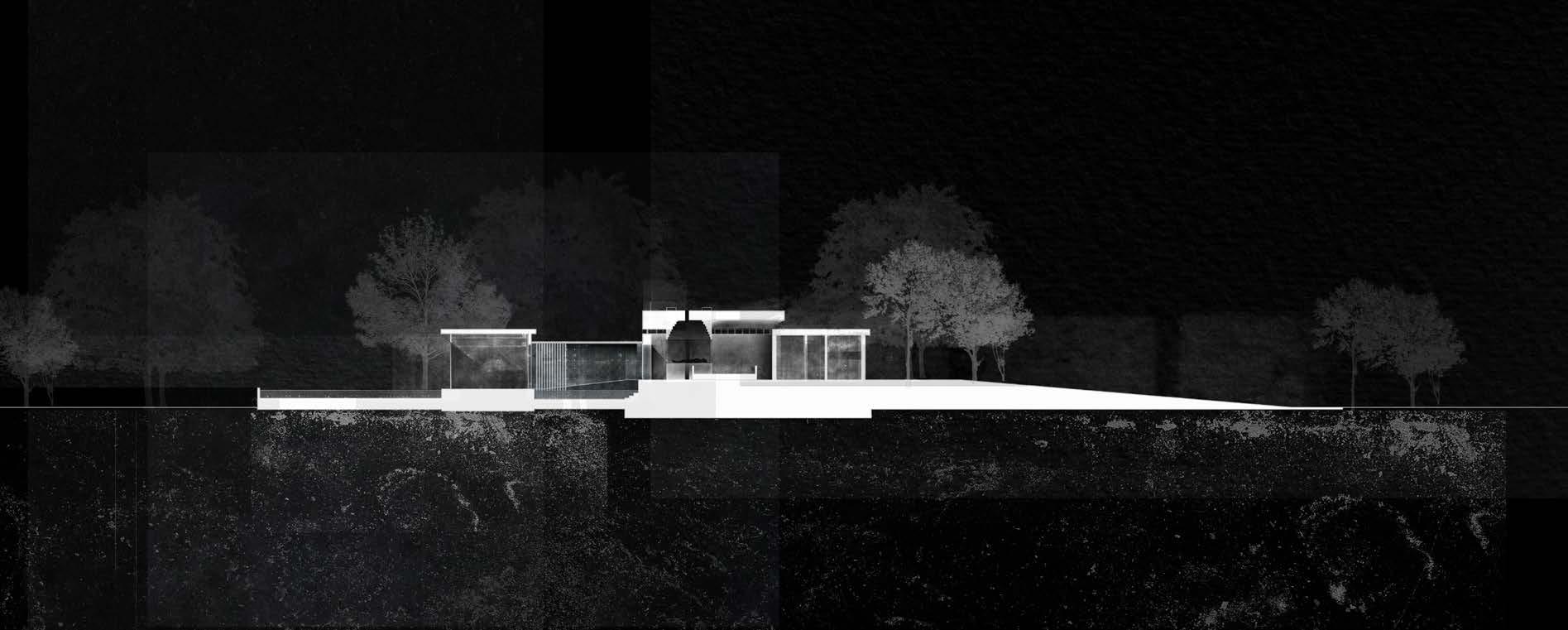
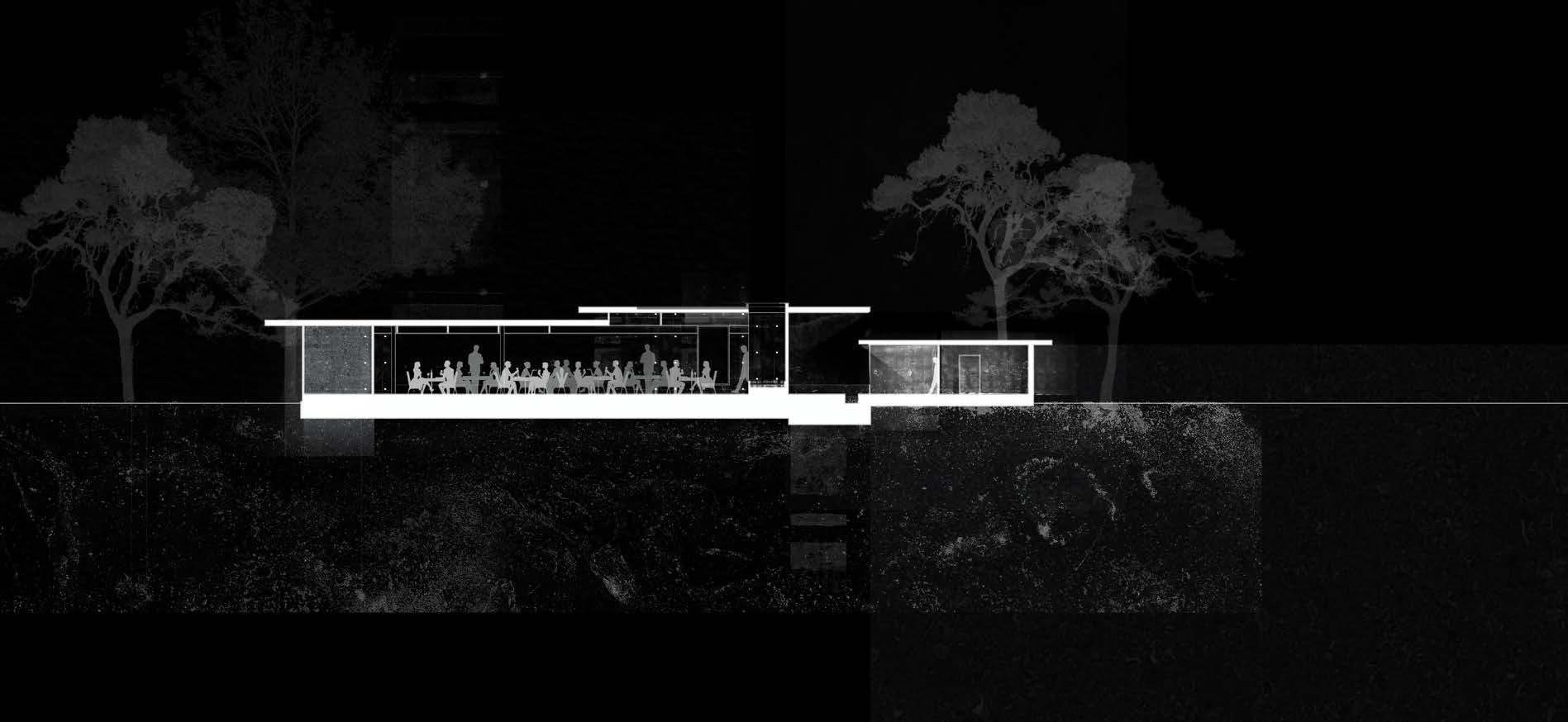
87
Arrival
Upon arrival, flowing water greets the visitors - quieting conversation into the gathering space. Natural stones line the pathway to ease the transition from softscape to hardscape.
Decent To Burial
The manipulation of horizon guides the procession through a series of ascending levels that mark a departure from the ground. The chapel rests on the highest point, providing isolated views of the landscape that juxtapose the body on the alter. A ceremonial circumambulation of the chapel ushers the precession back to the ground where the body is lowered into its final resting place.

media + modeling III prof. tzu-chieh k. hong fall 2021 colleagues: elizabeth gooch nicole barrow miguel jimenez
Nexus Pavilion
The Nexus Pavilion is a prefabricated tent-like structure that can be built and then deconstructed as a temporary instalation for any public space. The catalyst of the project was an interest in developing a digital language between tectonic systems and enclosure. Assembly logistics interpret this language as the interplay between joints, connections, and surfaces. Experimentation with the domains and bounds of these elements allows for numerous possible variations in the structures design based on program and site.
Formal Derivation

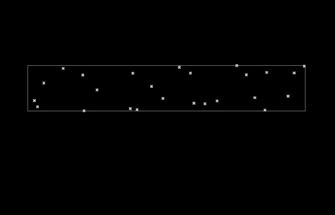
Starting from an initial design goal, our team performed a set of operations in Grasshopper to develop a formal study that can be applied to multiple sites. The resulting tectonic structure is transformed by adjusting the number of points, the density of points, and the movement of points in the z direction. Four anchor points form their own data set that is not manipulated in order to preserve points of connection to a site. Applying a Delaunay mesh to the frame introduces the idea of surface.
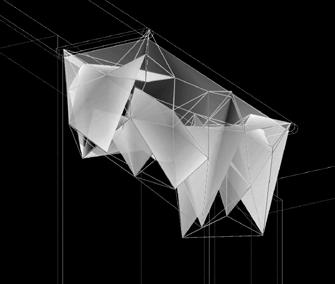
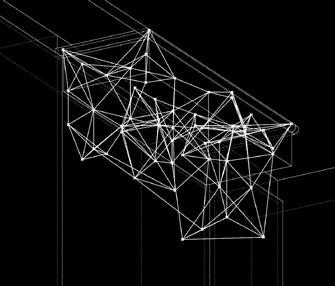
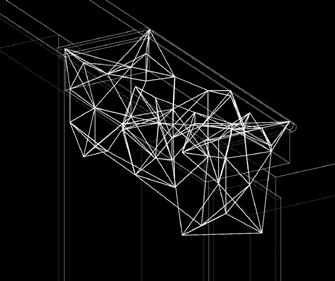
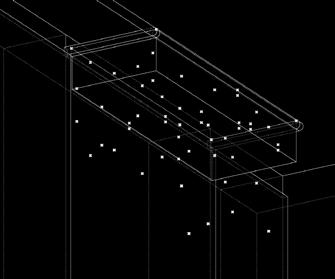



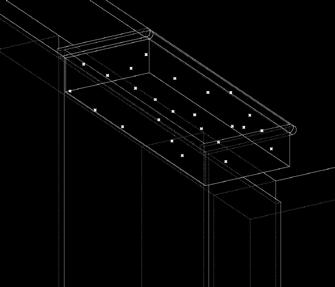
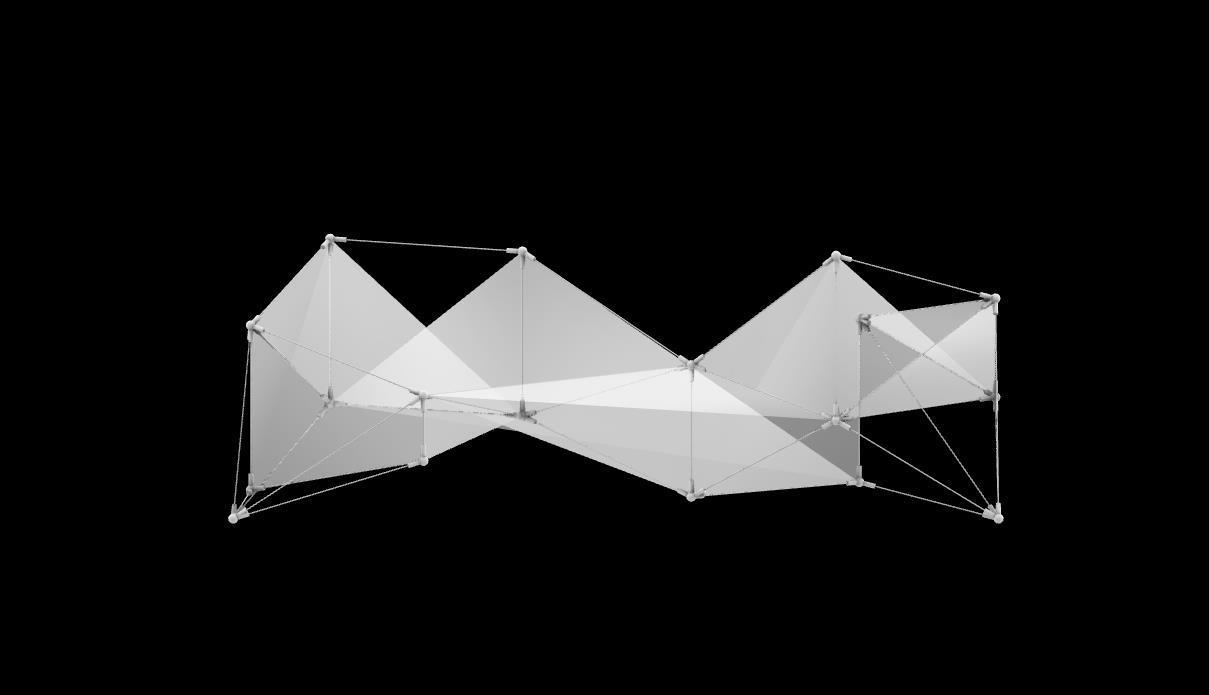

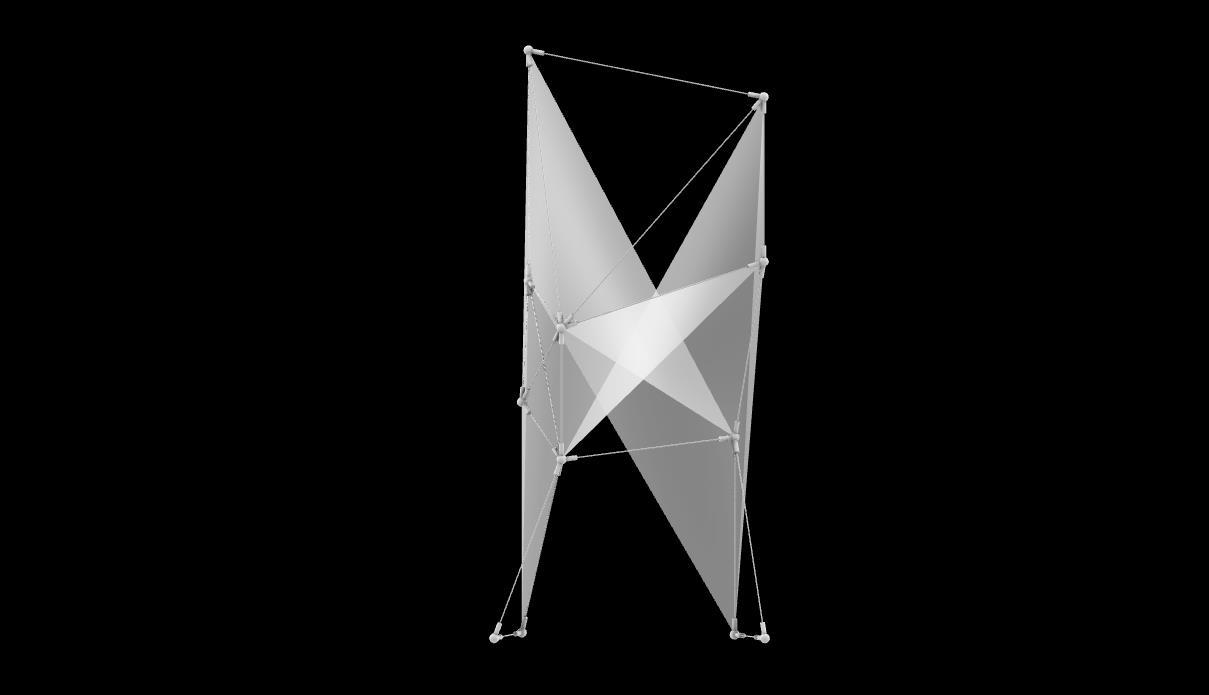
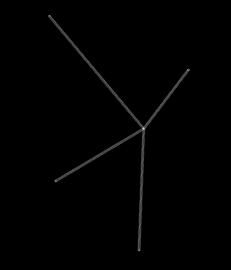





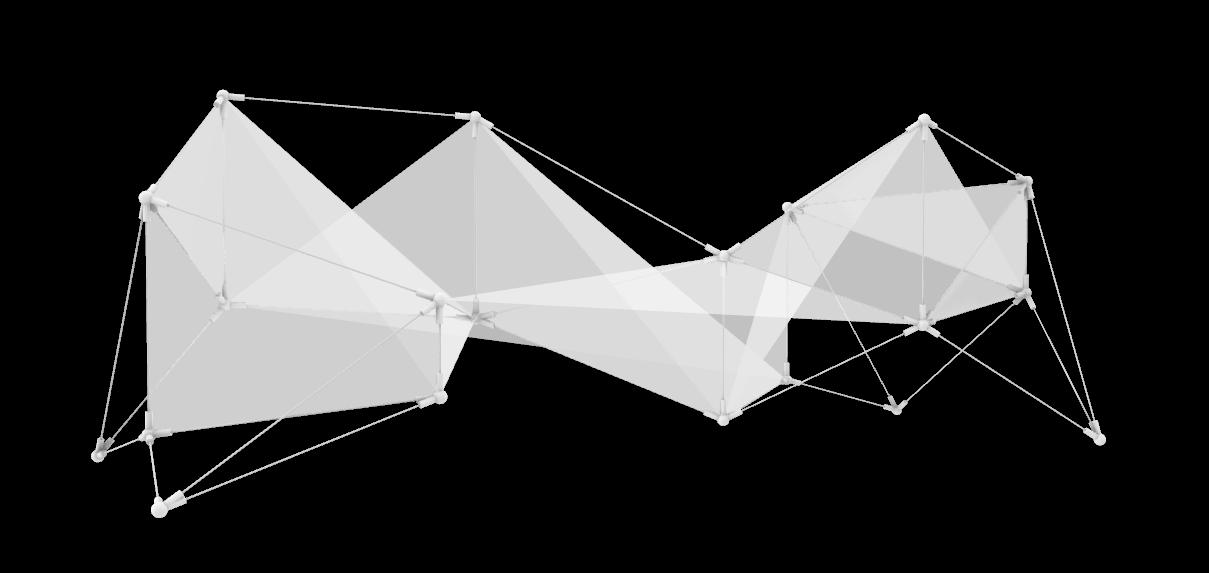


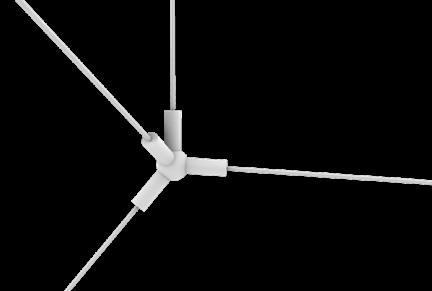


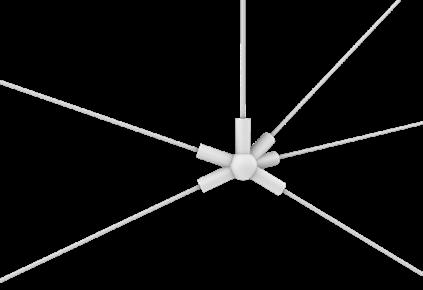

Surface Derivation
DELAUNAY MESH FACE NORMALS DISTANCE SMALLER THAN GATE OR . CULL FACES
Create mesh from triangulation of points.
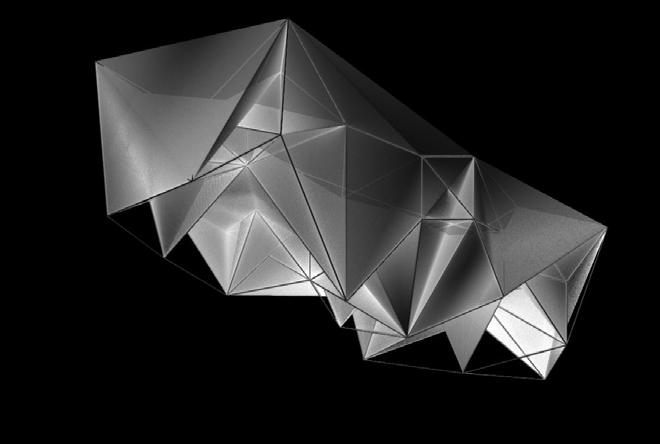
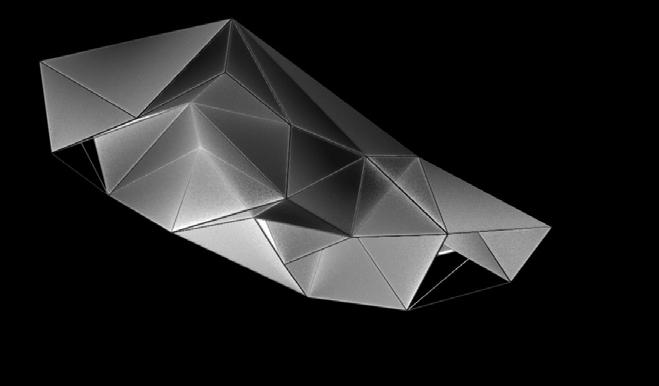
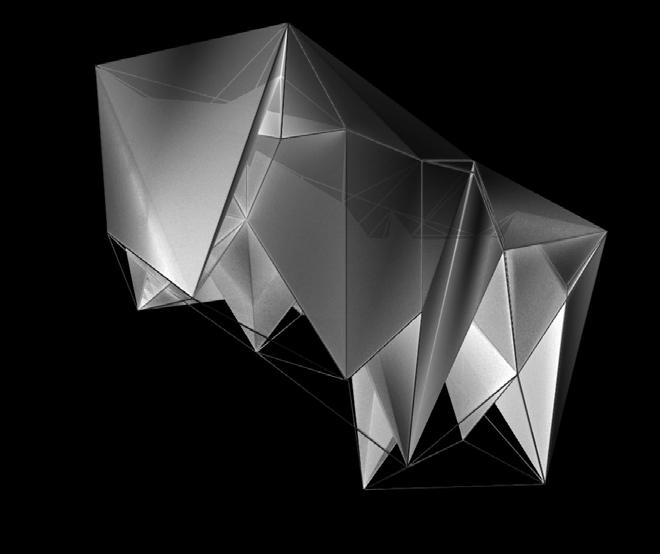
Locate the centers of each face.
Find distances between cloud points and centers of faces. Determine specified points.
Join the list of elements.
Construct mesh from specified points. CONNECTIONS (C(X))
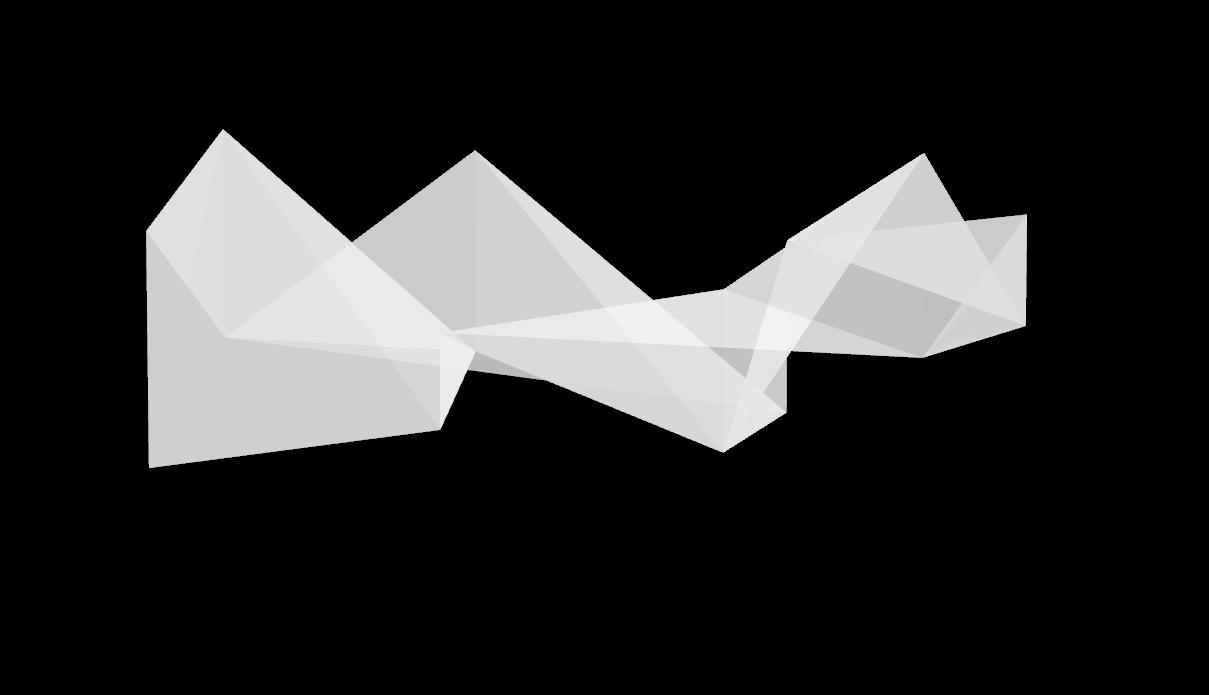



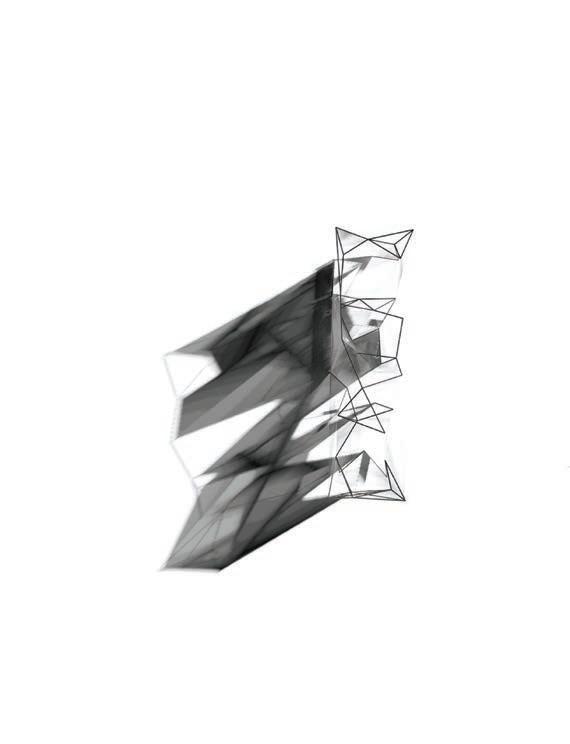

Digital Sites
This project focuses on the implementation of a site in a digital context. It highlights the skillsets of creating a pliable geometry that reacts systematically to a given surface condition. In this case, the orientation and position of a cylindrical form dictates the rotation and scale of a motif in a vertical datum. The result is a spine-like structure that twists parametrically to form various iterations of spiraling towers.
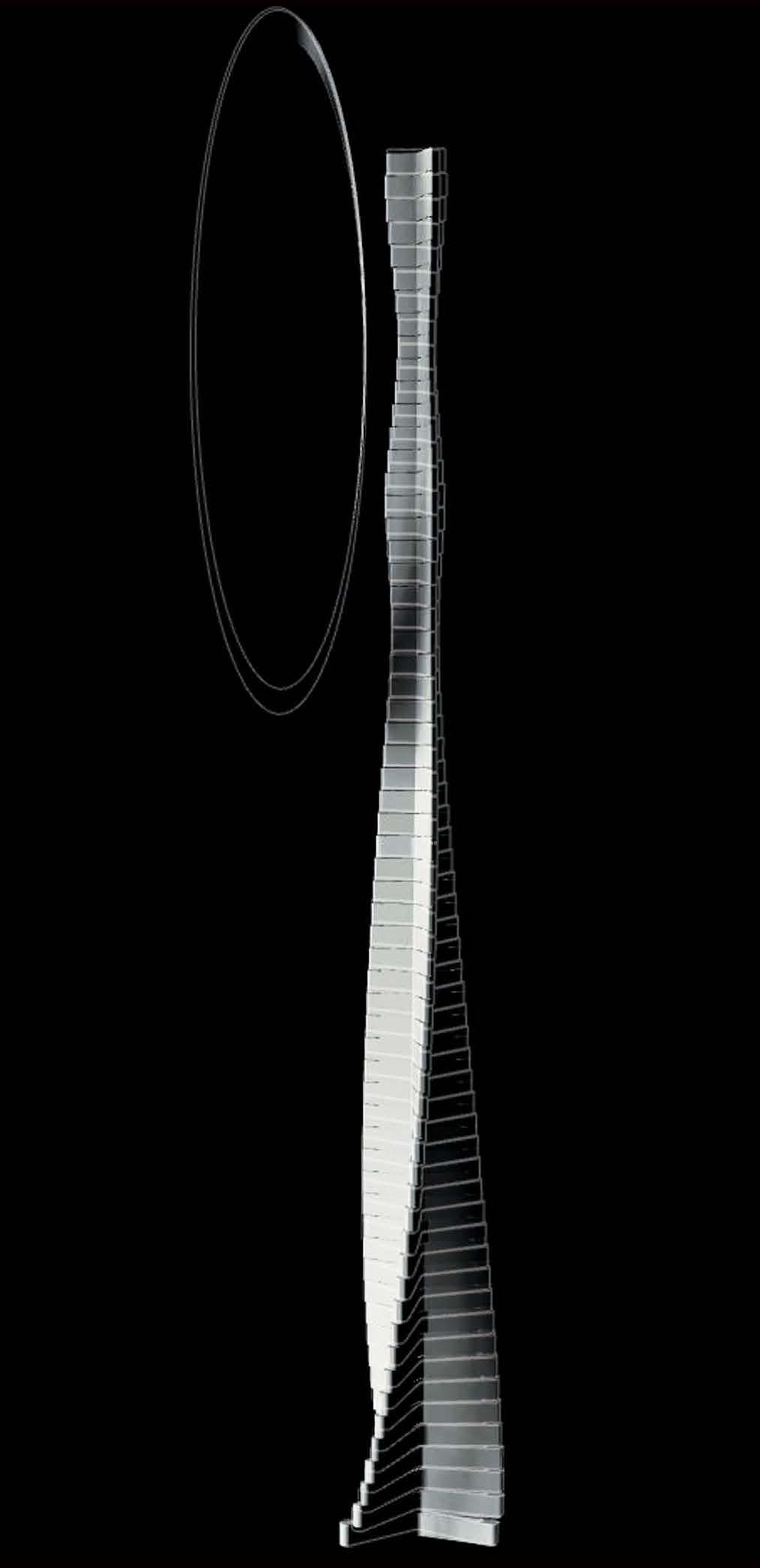
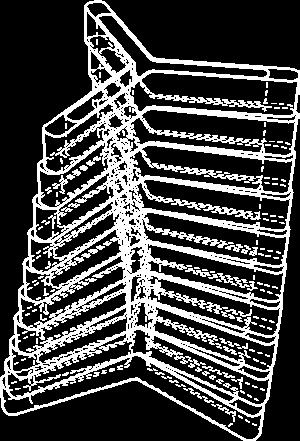
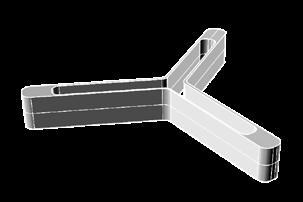
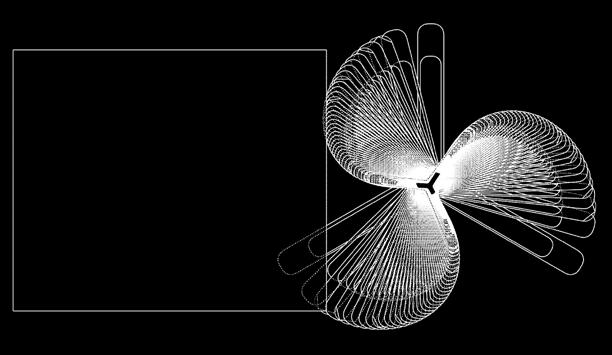

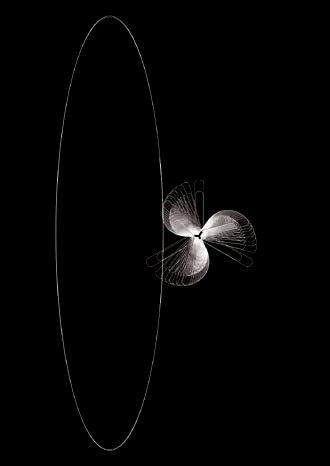


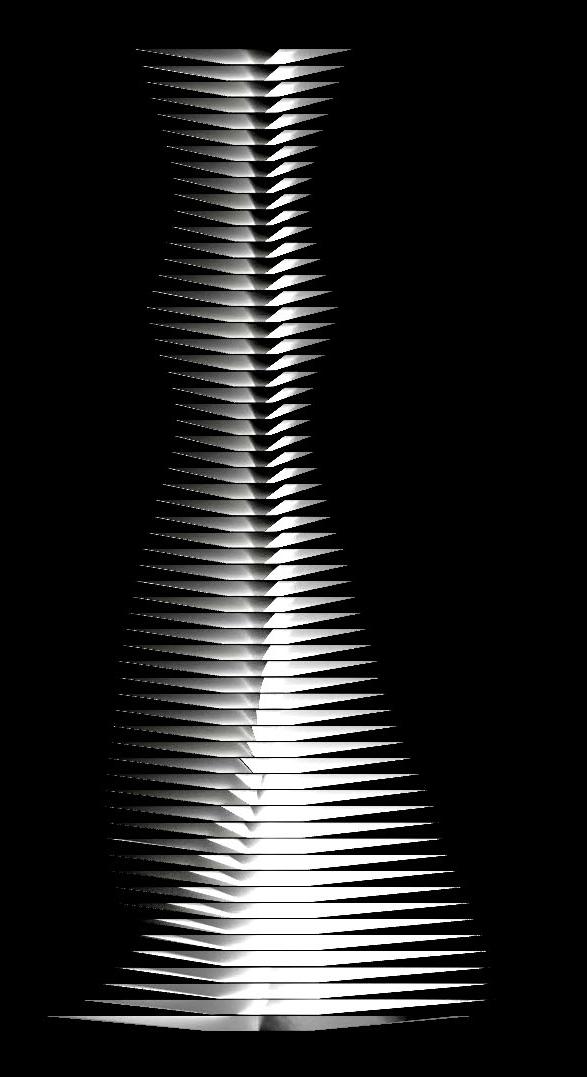
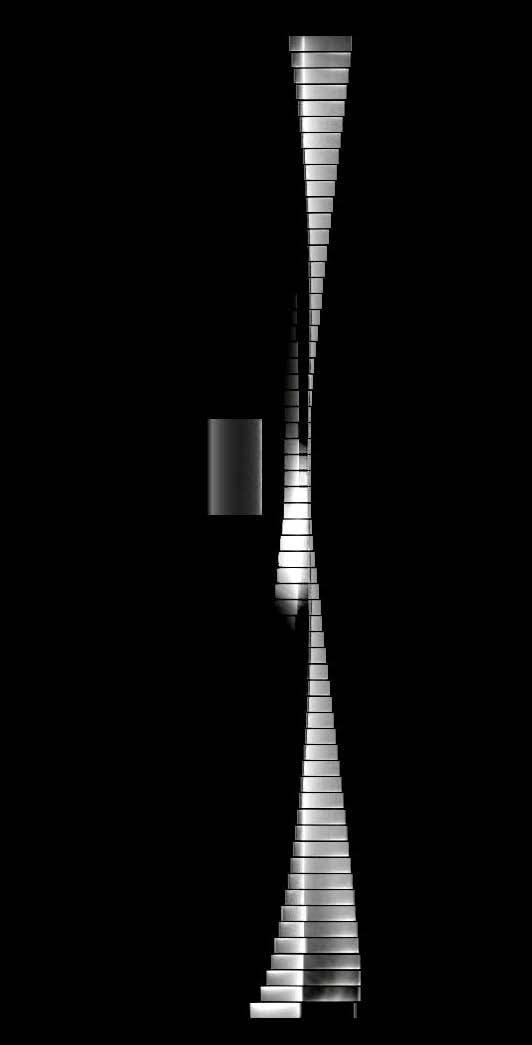
theory II - left hand of darkness prof. mark cottle fall 2022
Shadow Structures
This course was a study on the power of light and shadow. Neither can be truly understood without the presence of the other. The shadow itself is not merely a physical phenomenon but holds materiality, form, and vision. It is a part of a basic set of metaphors that structure our values and organize our understanding of the world. Through the medium of charcoal, drawings were produced with the catalyst of single-word prompts The prompts encouraged a seeking and studying of phenomena in our everyday environments. The work is a collection of moments described in light and shadow using a variety of techniques to convey a simple idea.
Meditations
advanced sketching prof. peter sprowls spring 2021
